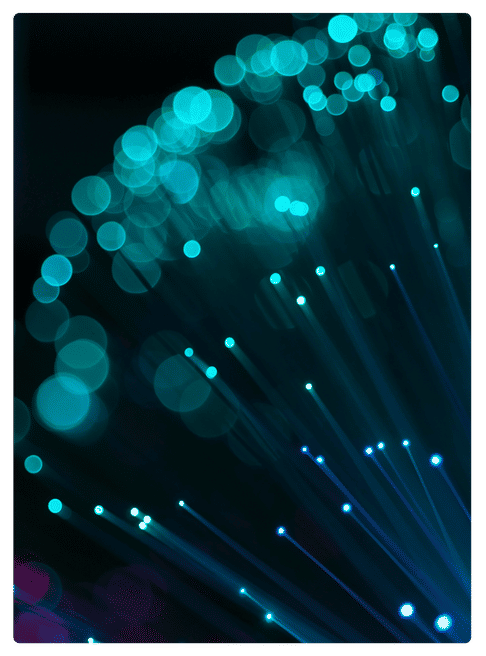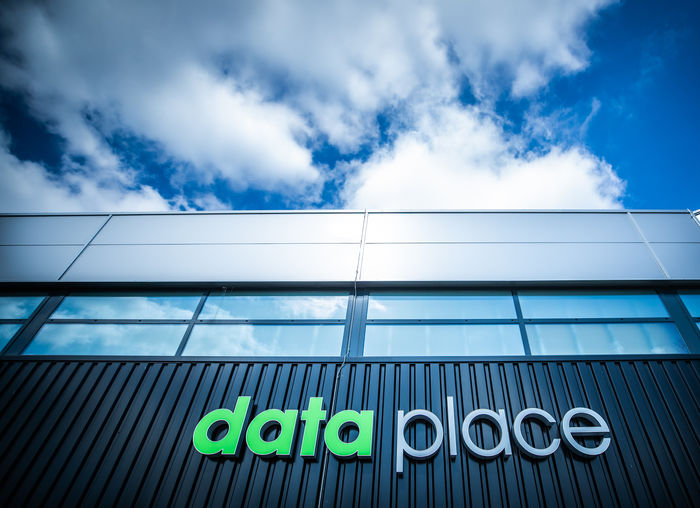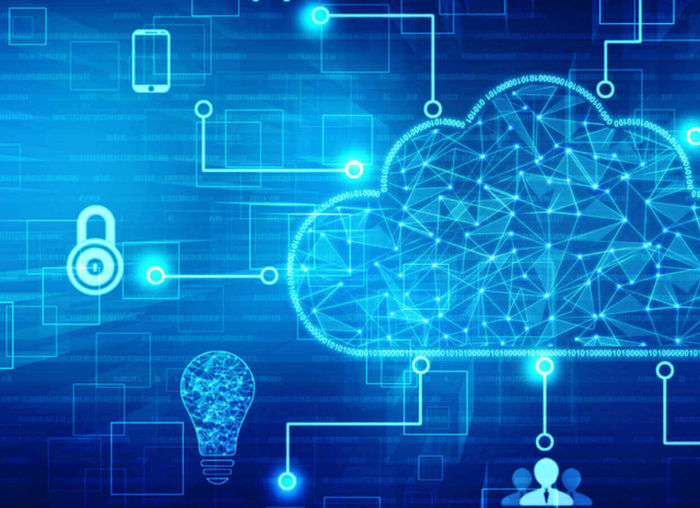It is estimated that less than half of the world's population is currently connected to the Internet. However, this number is growing rapidly as technology democratizes and becomes available to a growing number of people and organizations in more and more countries. Worldwide there are currently more than 50 billion devices connected to the Internet, often smart devices that generate data and are connected to each other.
In addition, there is a growing need for technology that facilitates working and communicating remotely. The IT landscape of the future therefore requires a flexible, scalable and robust IT infrastructure. A landscape that can handle both traditional and modern, data-driven workloads. And an infrastructure that supports modern technologies like containerization, microservices, AI and IoT, allowing you to move quickly with new market developments and changing customer needs.
Creating such an IT landscape and infrastructure of the future is a tough challenge for many organizations. A report by The Economist Intelligence Unit (EIU) indicates that many IT decision-makers and business executives believe moderate to significant upgrades to IT infrastructure and apps are needed to adequately respond to future changes. In this article, you'll read all about the concerns that come along with aligning your IT infrastructure with future needs.
1. Choosing the right cloud solution
By now, most organizations and tech followers agree that the cloud is the future. But there is a lot to choose from when it comes to the cloud these days. You can go for public clouds, private cloud solutions or a hybrid cloud (combination of public and private). The latter model is rapidly gaining popularity. Read more about the advantages of hybrid data centers here.
A hybrid cloud gives you the option to use SaaS technology from the public cloud for standard business processes, such as office applications, email and services. You can house the more business-critical stuff and privacy-sensitive data in the private cloud in a data center. The main advantage of an external data center is flexibility. You only use and pay for the space you need at any given time. When you need more capacity, scaling up is no problem.
2. A future-proof data center
The continuous growth of data and the emergence of hybrid work also place new demands on data centers. The "old style" data center will make way for a new generation of data centers. These will increasingly function as central control points that can manage data remotely with intelligent applications.
Security and reliability are hugely important assets for future-proof data centers. A modern data center must be robust, well secured and privacy proof. It also contains the tools and knowledge to prevent both physical intrusions and digital attacks. Extensive security analytics and network monitoring are therefore becoming increasingly important components of the data center administrator's toolkit. Therefore, look critically at the above concerns when choosing a storage partner and data center.

3. Exploit the possibilities of fiber optics
Connectivity is also an important consideration when designing a future-proof infrastructure. Data must be transported from one place to another faster than ever to facilitate location-independent working. Modern fiber optic technology offers great potential for optimizing your IT infrastructure. It delivers the ideal combination of speed and reliability.
Besides, fiber optics are still being developed extensively. Think, for example, of hollow fiber, a method of exposure that allows you to transport data at even higher speeds. When you send something, it takes the same time as downloading it. This is useful if you often put large files, such as videos, on the Internet. But also, for example, during video calls, where your own video image is sent with high quality and therefore there are fewer hitches visible.
4. Create commitment to setup
A reliable IT infrastructure is important for all employees within your organization. The board, the managers, the employees on the work floor and the home workers: everyone depends on it. Everyone needs a good and fast connection that allows employees to communicate with each other optimally.
Therefore, involve all stakeholders in the design of your IT infrastructure, so that there is no friction within the organization about the chosen solutions. Think, for example, of a project team with representatives from each part of the organization. In this way, the interests of each team within the organization are represented. Also think about providing tools for a good home office and appropriate collaboration tools to ensure involvement. Establishing a future-proof IT infrastructure largely hinges on properly implementing remote technology to keep staff connected and engaged.
5. Future-proof, sustainable IT infrastructure.
Sustainability is a focus that no company can ignore anymore. It is an issue that is high on the agenda and touched upon by 80% of global companies in their communications. In addition to paying an attractive rate, it is also increasingly important to take account of the generations to come. A future-proof IT infrastructure takes this into account.
This can be done, for example, by opting for data centers that make use of techniques such as energy saving, reuse of residual heat, more efficient cooling techniques and renewable energy sources.
What does a well-designed IT infrastructure deliver?
A well-designed IT infrastructure will benefit your organization both now and in the future. Consider, for example, the benefits listed below.
- The integration of information and smooth workflows across the organization. This paves the way for a data-driven way of working and increases the productivity and job satisfaction of employees.
- It becomes easier to change systems and processes quickly and align them with new market needs and changing customer requirements.
- You have the freedom to take full advantage of innovations in IT.
- A modern IT infrastructure builds in an important place for sustainability, saving you energy costs and emissions. That's good for the environment, your company image and monthly energy bills.
- Better connectivity gets data to the right place quickly and makes remote (collaborative) work and communication easier and more efficient.
Getting started with the focal points & your IT infrastructur
How do you get started with the above points of interest? How do you put them into practice and create the IT infrastructure of the future? Keeping everything in-house is difficult in an era where IT landscapes are becoming increasingly complex and elaborate. It helps to seek the cooperation of a partner who knows all the challenges and possibilities involved in setting up the ideal IT infrastructure.
Eurofiber Cloud Infra is just such a partner. You can call on us for the 4 Cs which play a major role in setting up a good, robust and future-proof IT infrastructure.
- Cloud: Eurofiber Cloud Infra Cloud Connect provides secure private connections to the public cloud. Since you bypass the public Internet, you connect securely to various cloud providers and are guaranteed bandwidths. In addition, Dataplace offers you a high-quality IaaS platform running on a scalable and secure VMware cluster. Finally, with the CloudHub you also benefit fully from the advantages of a hybrid cloud model.
- Connectivity: with the combination of the Eurofibers Cloud Infra network and for example Eurofiber's business fibre optic, you always benefit from optimal connectivity. Fast data transfer and remote working are never a problem again.
- Colocation: with Eurofiber Cloud Infra's twin data centre solution, you transfer your IT infrastructure to the same reliable party in two geographically separate locations.
- Consultancy: no two organisations have exactly the same IT landscape and the same needs. A specialist like Eurofiber Cloud Infra also offers consultancy services and works with you to find the ideal customised solution.
Want to know how Eurofiber Cloud Infra can take your IT infrastructure to the next level?
Thanks to the experience and knowledge we have gained over the years in the world of datacenters and IT, Eurofiber Cloud Infra has developed a clear vision of the challenges and points for attention which need to be addressed when creating a good and future-proof infrastructure. The social challenges of today demand the digital solutions of tomorrow. And we are prepared for this.
Do you also want to build a powerful IT infrastructure that is ready for the challenges of the future? And would you like to know how Eurofiber Cloud Infra's services and solutions can help you do this? Then feel free to contact us without obligation by calling +31 (0)30 242 872 320, sending an e-mail to sales@eurofibercloudinfra.com or clicking on the button below and filling in the contact form.


